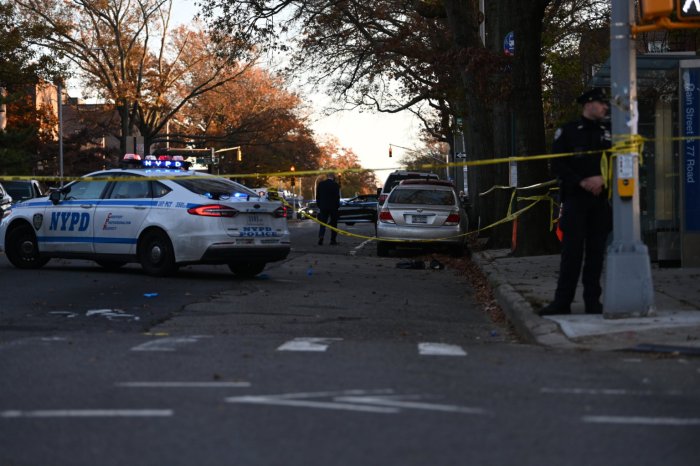But there’s no guarantee her child will ever get to attend.
The Our World Neighborhood charter school was approved at a public meeting in…
By Dustin Brown
Lisa Caballero is a founder of a new charter school set to open its doors in September to 250 students in Astoria.
But there’s no guarantee her child will ever get to attend.
The Our World Neighborhood charter school was approved at a public meeting in Manhattan on Jan. 23, and its name is only the first hint of the selflessness and sense of community that went into its creation.
Students are chosen to attend charter schools by lottery, which means the founders have no better chance of sending their children to the school than their thousands of neighbors. They established the school to benefit an entire neighborhood, to provide an education that is worthy of the Astoria community.
Our World Neighborhood was conceived by a group of parents in Astoria who sought to create an alternative to the overcrowded schools of District 30. They started pooling ideas two years ago — meeting in their living rooms, strewing coffee tables with academic resources — as they converted themselves from parents to educators, building a new school from the ground up.
“It’s very hard for a group of parents to start a school. We don’t have a curriculum, we’re not educators,” Caballero said.
It was the essence of grass-roots organizing, and the effort paid off. Our World Neighborhood was one of only seven charter schools approved this year by the State University of New York Board of Trustees, which selected the school from among 42 applicants — down from nearly 100 the previous year.
Our World Neighborhood is “a model for how a community group should go about researching and applying for a charter school,” said Jeff Perez, spokesman for the New York Charter Schools Institutes, which administers the charter application process for SUNY.
Although school organizers are still negotiating the location, Our World Neighborhood will open in September as a K-5 school, gradually adding grades and students until it stabilizes with 675 students from kindergarten to eighth grade. Each grade will consist of three classes, none of which is to exceed 25 students.
SUNY is one of only three bodies authorized by the Legislature to approve and oversee the operation of charter schools, as dictated by the Charter Schools Act of 1998. The act created a system of charter schools that operate independently of the laws that govern all other public schools.
Charter schools may be founded by any combination of parents, teachers, school administrators, or community residents, and the parents in Astoria chose to partner with Mosaica Education Incorporated, which will manage the school.
“The reason we went with them is because we were so impressed with their curriculum, and a better curriculum could not be designed for our neighborhood,” Caballero said. While the morning is devoted to traditional basics such as reading, writing, math, and science, students spend the afternoon immersed in what Caballero described as “an integrated study of the history of ideas and events which have shaped our culture.”
Residents spent two hours discussing their experiences with Astoria schools at a public meeting Feb. 6 at Long Island City High School, where Caballero formally announced the charter school’s approval.
“It ended up being a very powerful and personal testament to need for the school,” Caballero said.
Among those who spoke was Mary Bogle, a founding parent who sees many great things in the public schools but not necessarily enough to send her children there.
“I’ve been doing a fairly thorough search of the schools, and my favorite is the public school we are zoned for, PS 166,” she said. “It’s a great facility with a great principal, it’s very well run, they encourage parental involvement, but I can’t send my son there, because they are so crowded that they’ve built over their playground to make room for more classrooms.”
The loss of playground space means students lose their outdoor recess period. Instead, the younger students play in their classrooms, while their older classmates watch cartoons in the auditorium. “I don’t believe in feeding the mind and not taking care of the body,” Bogle said.
Although suburban districts offer smaller class sizes and spacious facilities, Bogle still isn’t willing to sacrifice the intangible benefits that come with living in Astoria. “I think we live in a wonderful neighborhood. I don’t want to move to the suburbs,” she said.
The loyalty Bogle feels toward the neighborhood is shared widely among her neighbors, one of whom explained the area’s lure in her public comments.
“If you talk about western Queens to politicians, they talk about coastline development,” Martha Tassiello told the audience of nearly 100.
“That’s not the most precious commodity that western Queens has to offer. It’s really its rich, diverse population of families, all of whom live together in harmony.”
Reach reporter Dustin Brown by e-mail at Timesledgr@aol.com or call 229-0300, Ext. 154.





























